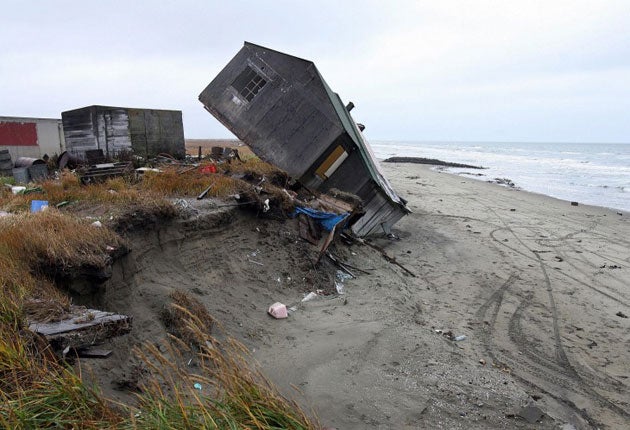Melting of the Arctic 'will accelerate climate change within 20 years'

Your support helps us to tell the story
From reproductive rights to climate change to Big Tech, The Independent is on the ground when the story is developing. Whether it's investigating the financials of Elon Musk's pro-Trump PAC or producing our latest documentary, 'The A Word', which shines a light on the American women fighting for reproductive rights, we know how important it is to parse out the facts from the messaging.
At such a critical moment in US history, we need reporters on the ground. Your donation allows us to keep sending journalists to speak to both sides of the story.
The Independent is trusted by Americans across the entire political spectrum. And unlike many other quality news outlets, we choose not to lock Americans out of our reporting and analysis with paywalls. We believe quality journalism should be available to everyone, paid for by those who can afford it.
Your support makes all the difference.An irreversible climate "tipping point" could occur within the next 20 years as a result of the release of huge quantities of organic carbon locked away as frozen plant matter in the vast permafrost region of the Arctic, scientists have found.
Warming threat to the frozen ground of the arctic: Click here to download the graphic (80k)
Billions of tons of frozen leaves and roots that have lain undisturbed for thousands of years in the permanently frozen ground of the northern hemisphere are thawing out, with potentially catastrophic implications for climate change, the researchers said.
A study into the speed at which the permafrost is melting suggests that the tipping point will occur between 2020 and 2030 and will mark the point at which the Arctic turns from being a net "sink" for carbon dioxide into an overall source that will accelerate global warming, they said.
The study is the first global investigation of what will happen in a warmer world to the huge amounts of frozen plant matter that has remained undegraded in the soil since it was incorporated into the permafrost about 30,000 years ago.
It also found that by 2200 about two-thirds of the Earth's permafrost will have melted, releasing an estimated 190 billion tons of carbon dioxide and methane into the air – about half of all the fossil fuel emissions of greenhouse gases since the start of the industrial revolution.
"Our results indicate that, as the Arctic warms up, this frozen carbon will thaw out, allowing microbial decay to resume and releasing carbon into the atmosphere," said Kevin Schaefer of the US National Snow and Ice Data Centre in Boulder, Colorado.
"Our research shows that the release of carbon from permafrost will result in an irreversible climate tipping point in only 20 years... Once the frozen carbon thaws out and decays, there is no way to put it back into the permafrost," Dr Schaefer said.
The Arctic has experienced some of the greatest climatic changes in the world over recent decades. Summer sea ice has melted back to record minimums, average temperatures have increased dramatically, and scientists have documented significant melting of the underground permafrost, from Alaska to eastern Siberia.
The rising temperatures have lengthened the growing season of the Arctic summer, which has increased plant growth and the consequent uptake of carbon dioxide. However, by around 2025 this will go into reverse and the thawing permafrost will release more carbon than is being taken up by the tundra growing above it, Dr Schaefer said.
"There are two important messages from this study. The first is that the melting permafrost can release huge amounts of carbon and, secondly, the process is irreversible on a human timescale and will affect our targets for reducing fossil fuel emissions," he said.
"All our emission reduction strategies are designed to hit a target atmospheric carbon dioxide concentration corresponding to a target climate. If we do not account for carbon released from thawing permafrost, we will overshoot this target concentration and end up with a warmer climate than we want," Dr Schaefer said.
Permanently frozen ground covers about a quarter of the northern hemisphere and starts about a metre below the surface, extending up to 500 metres. The top three metres contain most of the frozen plant matter, primarily grass roots caught up in the last ice age.
Join our commenting forum
Join thought-provoking conversations, follow other Independent readers and see their replies
Comments